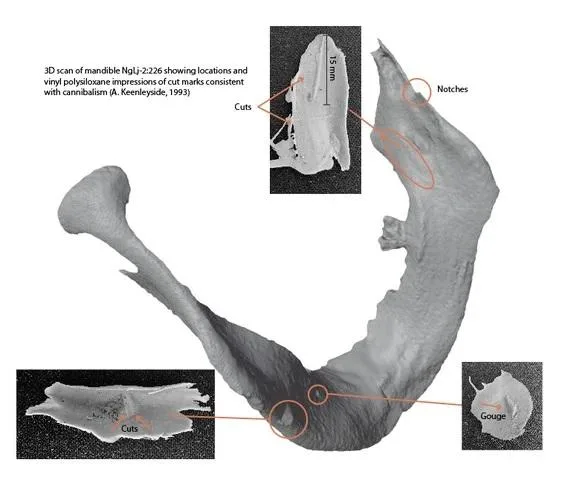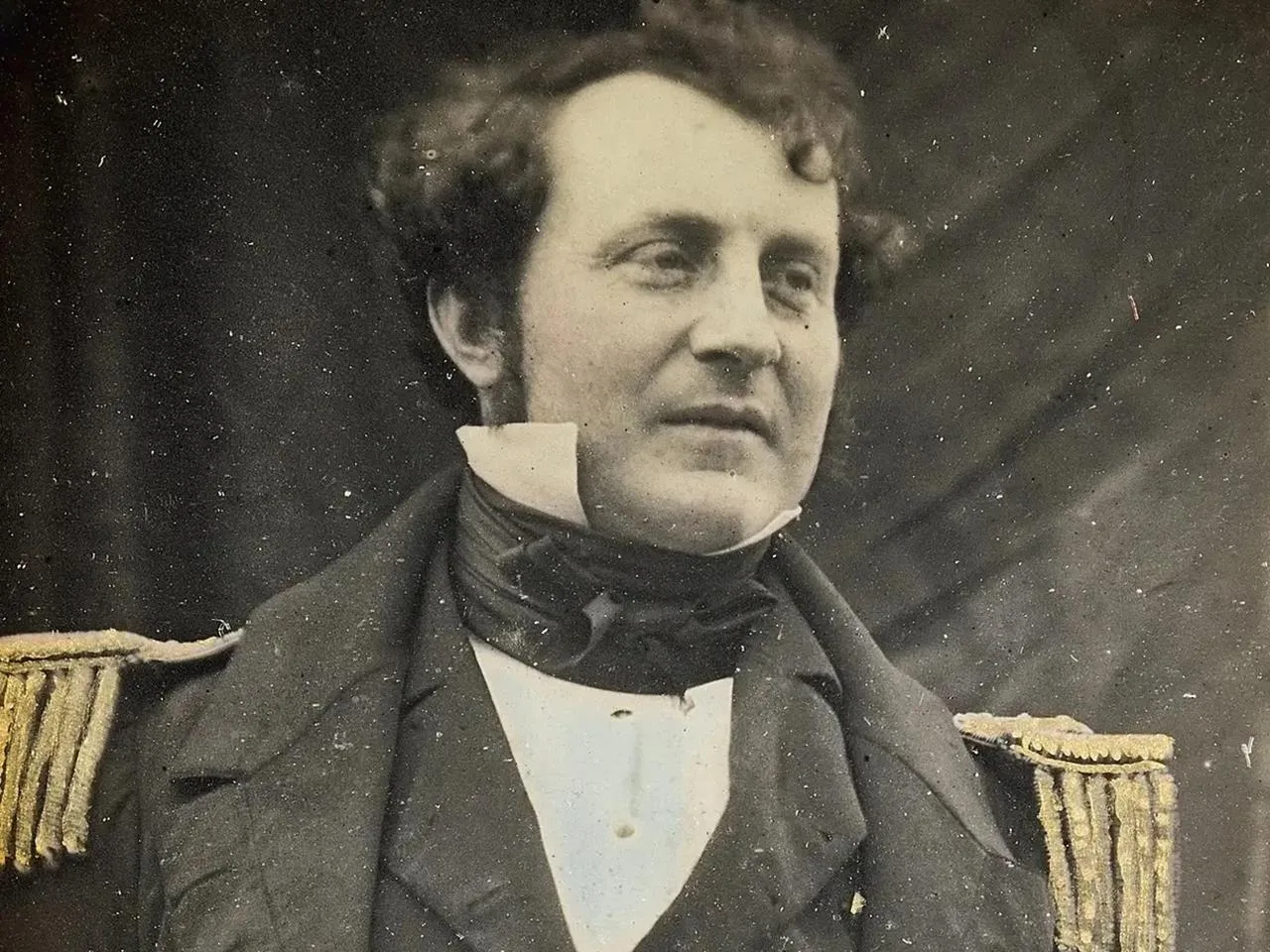It’s official—scientists have identified the remains of James Fitzjames, one of the senior officers aboard the ill-fated Franklin expedition, almost two centuries after the ships HMS Erebus and Terror became trapped in the Arctic ice. This DNA breakthrough offers new insights into the expedition’s tragic end, confirming a haunting detail long speculated—cannibalism among the surviving crew members.
The Voyage of a Lifetime—Gone Wrong
In 1845, Captain Sir John Franklin set sail with 128 officers and crew aboard two ships, aiming to conquer the last uncharted section of the Northwest Passage in the Canadian Arctic. The journey wasn’t just about mapping unknown territories; it was a quest to dominate Arctic navigation and gather vital scientific data. However, after the ships became frozen in the unforgiving ice of King William Island, it became clear that the mission had taken a catastrophic turn. By 1848, only 105 men remained, including James Fitzjames. These survivors were left to face an unimaginable ordeal as they abandoned their ships and embarked on a doomed march toward mainland Canada.
Spoiler alert: none of them made it.
DNA Breakthrough: Unlocking the Past
Fast forward to 2024, and a molar attached to a jawbone, found on King William Island, helped researchers identify Fitzjames. Scientists from the University of Waterloo and Lakehead University matched DNA extracted from that molar to a living relative of Fitzjames—his second cousin, five times removed. How’s that for a family reunion?
According to Stephen Fratpietro, head of Lakehead’s Paleo-DNA Lab, “We worked with a good quality sample that allowed us to generate a Y-chromosome profile, and we were lucky enough to obtain a match.”
This wasn’t just a quick “Who’s Who” of 19th-century explorers. It’s only the second positive identification of a crew member from the Franklin expedition. The first was John Gregory, an engineer from the Erebus, whose remains were identified in 2021.

Grim Confirmation of Cannibalism
But the findings don’t stop there—brace yourself. It’s confirmed that Fitzjames’ remains show signs of butchering consistent with cannibalism. Dr. Douglas Stenton, an anthropologist from the University of Waterloo, co-authored a study published in the Journal of Archaeological Science: Reports, revealing cut marks on Fitzjames’ mandible. These marks, Stenton explains, are consistent with the horrifying practice of cannibalism, a last-ditch survival effort among the remaining crew.
As Stenton puts it, “Neither rank nor status was the governing principle in the final desperate days of the expedition as they strove to save themselves.” The thought of the officers being butchered just like any other crew member shatters the romanticized image of explorers stoically facing death in the Arctic. The reality was far darker and more desperate.
Read more: The Death of Richard Ramirez: The Unquiet End of California’s Infamous Night Stalker
Inuit Accounts Finally Vindicated
The idea of cannibalism in the Franklin expedition isn’t new, but it was initially dismissed by European searchers as too outlandish to be true. However, the Inuit people who lived in the region had reported as early as the 1850s that survivors of the expedition had resorted to eating each other. For over a century, their accounts were met with skepticism, until Dr. Anne Keenleyside’s research in 1997 revealed cut marks on many of the human remains found on King William Island. These findings have only been reinforced by modern studies like this one. The evidence is undeniable, and it tells a grim story of extreme desperation.
As Robert Park, another co-author of the study, emphasized, “It demonstrates the level of desperation that the Franklin sailors must have felt to do something they would have considered abhorrent.” Imagine the horror these men must have endured as they slowly succumbed to the cold, hunger, and madness, all while trying to survive in one of the harshest environments on Earth.
Unanswered Questions Still Linger
Even though these new discoveries are groundbreaking, the Franklin expedition still holds many secrets. What exactly happened after Sir John Franklin died in June 1847? How did leadership break down? Why did the crew abandon the ships, leaving behind all hope of rescue?
While the DNA analysis answers some questions, the larger mystery of why these men were driven to such extreme measures remains unsolved. What we do know is that the final days of the Franklin expedition were as brutal as they come.
The Arctic’s Unforgiving Legacy
As we uncover more about the Franklin expedition, one thing is clear: the Arctic is not for the faint of heart. This frozen frontier holds both opportunity and unimaginable danger. With climate change reshaping the landscape, future explorers may face new challenges—and perhaps, like Fitzjames and his fellow officers, discover that the Arctic’s secrets are often better left frozen in time.
If you’re fascinated by the mysteries of the past or intrigued by the challenges of exploration, consider learning more about Arctic research. The lessons from the Franklin expedition remind us that even in the age of technology, nature is a formidable force, and we have much to learn from those who dared to challenge it.

